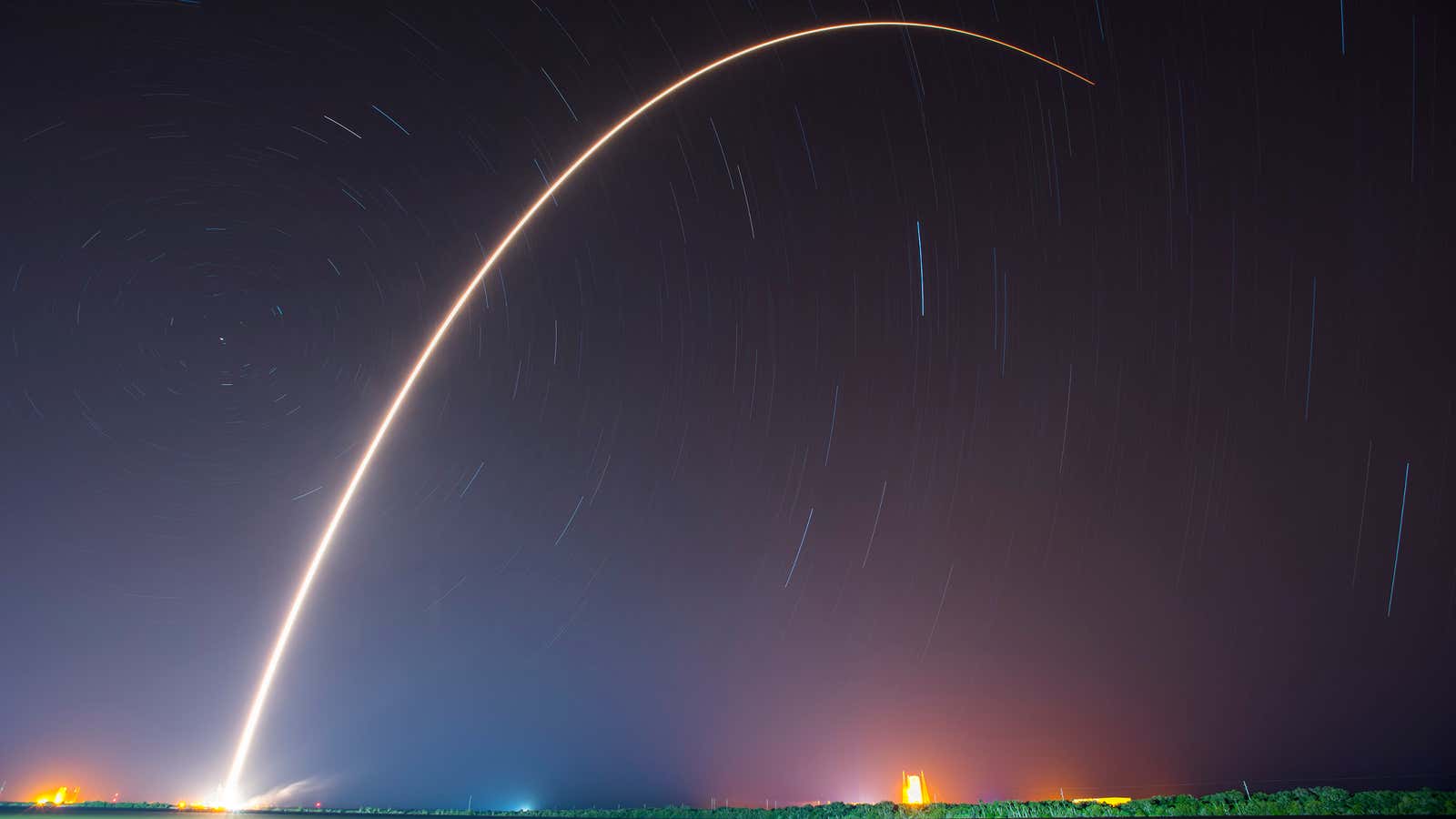Flying satellites and landing rockets are almost becoming routine for the Elon Musk’s rocket company, but SpaceX still managed to wedge a new milestone into their latest flight.
After launching JCSAT-14, a Japanese satellite that will provide TV and data services across the Pacific early this morning, SpaceX landed the first stage of its rocket on a floating platform at sea for the second time ever, a novel technique the company has developed to reuse more of its rockets and save costs.
Today’s landing does offer something new to the discerning observer: This is the first time that the company has landed a rocket that flew to “geosynchronous transfer orbit,” or GTO. That means it set its satellite cargo on a path to reach an altitude where the speed of its orbit will match the speed of earth’s rotation, allowing it to “hang” over one place, about 36,000 kilometers above us.
To get that high, the rocket must be going much faster than to reach, say, the International Space Station in low earth orbit. You can get a sense of the distance with our satellite map. So far, SpaceX has only landed reusable rockets that had delivered payloads to low earth orbit, because they’re already going slower when it comes time for them to turn around and head for earth.
When the rocket is taking its cargo to GTO, it requires three times the deceleration of one heading for low earth orbit. When the company tried to land a rocket that sent cargo to GTO earlier this year, it landed “hard,” though no images were released—we imagine it looked something like this failed landing from January, 2015:
But, as always with Musk, there’s a business plan behind the technology. The most lucrative satellites are those that hang over one spot on earth in their geosynchronous orbits. Introducing reusability into that launch market is key to lowering the price and growing SpaceX’s market share. And, at a time when numerous companies are developing cheap solutions to launch satellites in to low-earth orbit, ensuring dominance at the highest of altitudes will insulate SpaceX from those competitors.
Besides rocket reusability—and its implications for a trip to Mars—the big 2016 goal for SpaceX is a steady launch tempo. Initially, the plan ran into trouble thanks to a new fueling system, but it appears the kinks have been sorted out. The company has so far launched four out of 18 launches expected by SpaceX president Gwynne Shotwell.
This is the third first stage that SpaceX has landed, leading Musk to joke that he’ll need a bigger rocket storage hangar. But that also raises the question: When will one of these rockets be re-used?
